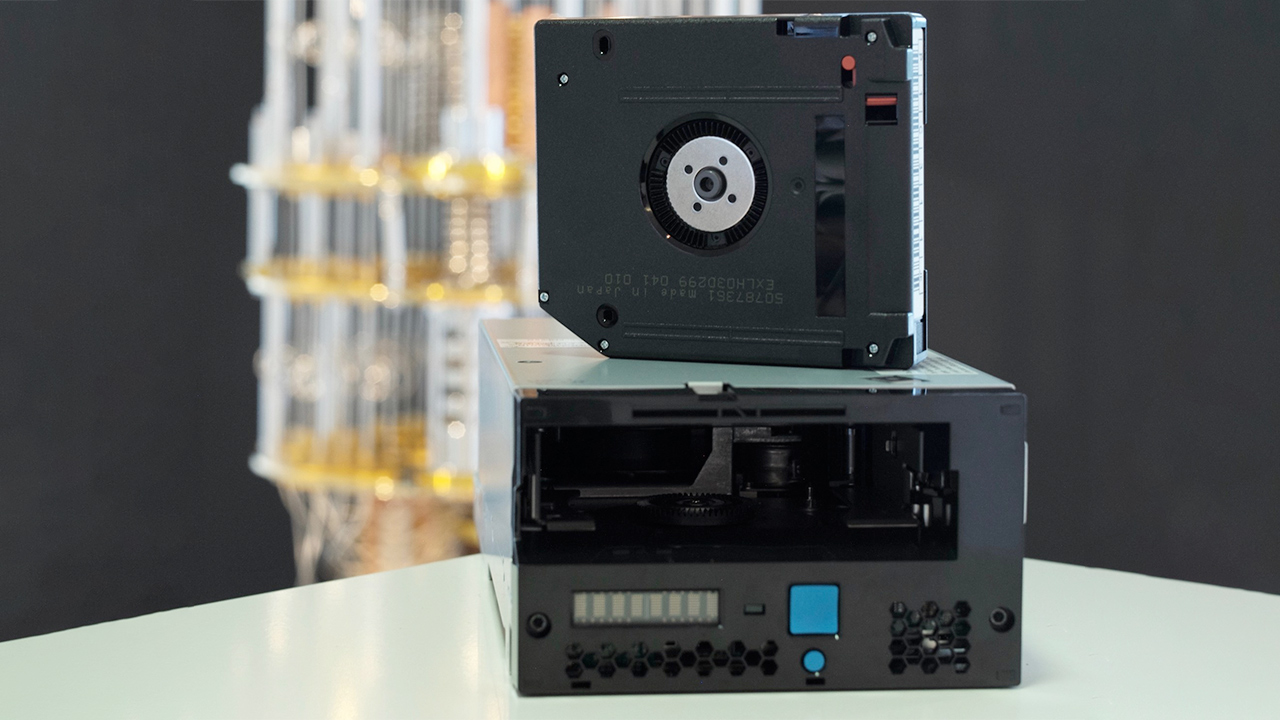Magnetic tape was invented back in 1928, 92 years ago, but it took years before it got commercialized for audio applications and then as a storage medium for digital data. By today’s consumer standards, magnetic tapes are slow, not convenient to use, and relatively expensive. But as magnetic tape prepares to celebrate its 100th birthday, it can offer capacities not available on modern hard disk drives. At least, IBM and Fujifilm believe that their newly developed Strontium Ferrite (SrFe) magnetic layer will enable LTO-8 tapes to store up to 580TB of data.
Data Storage Needs Increasing
Nowadays, data storage needs are increasing exponentially as numerous companies and organizations tend to collect big data for their services, devices generate zettabytes of data themselves, ultra-high-definition videos are gaining resolution and color depth (18K cameras are already here), and end-users are generating more data than ever. About 20% – 30% of the world’s datasphere — which is predicted to grow to 175ZB by 2025 — needs real-time processing, so it has to be stored on hard drives or solid-state drives. But anywhere from 70% to 80% of data is the so-called ‘cold data’ that is rarely accessed but still has value for businesses.
For cold data, 3.5-inch hard drives featuring shingled magnetic recording (SMR) technology are good enough. Still, they can only store up to 20TB of uncompressed data, and at $500+ they are pretty expensive. In contrast, modern LTO-8 magnetic tape cartridges can store up to 12TB native or 30TB of compressed data and cost less than $90. With an attractive combination of capacity and price, magnetic tapes have outlived three types of diskettes, CDs, and DVDs.
Fujifilm, IBM Research, and Sony are still developing magnetic tapes and manage to hit new milestones rather regularly. Since 2006, IBM and Fujifilm have increased the capacity of an LTO-8 tape from 8TB to potentially up to 580TB in the coming years.
Strontium Ferrite Particulate Tape: 317Gb/inch2 Recording Density
In general, magnetic tape evolves like hard drives. Developers tend to reduce track width to increase recording density, reduce tape thickness to increase tape length within a cartridge, and introduce new methods to reliably record and then read the data. This time around, IBM and Fujifilm are talking about a 317Gb/in2 recording density, a 1255 meters tape length, and 580TB of capacity.
One way to increase recording density — and therefore capacity — is to switch to a new tape material. Today, most tapes use Barium Ferrite (BaFe) magnetic layer, but to move on to higher densities, they need to switch to something else. IBM Research and Fujifilm propose to use a magnetic layer consisting of Strontium Ferrite (SrFe) magnetic particles. The companies say that SrFe particles have higher magnetic characteristics and 60% less particle volume compared to BaFe particles, which enables 56.2-nm wide tracks as well as a linear density of 702Kb/inch. Furthermore, SrFe features a good recording/readback performance with low noise, and since it is an oxide, it is very stable chemically, which makes it a viable candidate for long-term data storage.
Just like with hard drives, the right magnetic layer is only a part of the equation. Positioning read/write heads over 56.2-nm wide tracks on a tape that is streamed at a speed of approximately 15 km/h is challenging. To do so, IBM and Fujifilm developed a low friction tape head technology that can position its ultra-narrow 29nm-wide TMR read sensor at an accuracy of 3.2nm. The technology is enabled by a series of servo-mechanical innovations, including new servo controllers that support a new servo pattern that is pre-recorded in the servo tracks to assist the controller in maintaining a precise positioning of the heads relative to the tape as well as a new head actuator. Also, the two companies had to implement a new tape-handling method to control tape vibrations.
Tape in the Era of Exascale Datacenters
Neither Fujifilm nor IBM have revealed when to expect the commercial arrival of SrFe particulate-based LTO-8 magnetic tapes that can store up to 580TB of data, but the two companies are confident that the market for storage tapes will only grow in the coming years and new types of tape will be needed.
Analysts from Synergy Research estimate that in Q3 2019, there were more than 500 hyperscale data centers in the world, with more than 150 under construction. These massive server farms need to store their cold data somewhere, and tape has numerous advantages over both HDDs and SSDs.
Firstly, at $0.002 ~ $0.007 per gigabyte (native/compressed), tape is cheap. Secondly, it does not require power when not in use. Thirdly, data recorded on tape will still be readable in 30 years if the tape is stored properly. Fourthly, tape can be air-gapped to protect sensitive data against unauthorized access or manipulation. Finally, an LTO-8 tape provides superior storage density over modern HDDs and SSDs.
Researchers from Fujifilm and IBM note that even at a 317Gb/in2 recording density, which will be commercialized years from now, tape is still way behind today’s hard drives (which are on track to hit 2Tb/in2 in the coming years with HAMR) as far as this metric is concerned. But they argue that this means that tape has a lot of headroom for growth and will therefore stay with us for decades to come.
